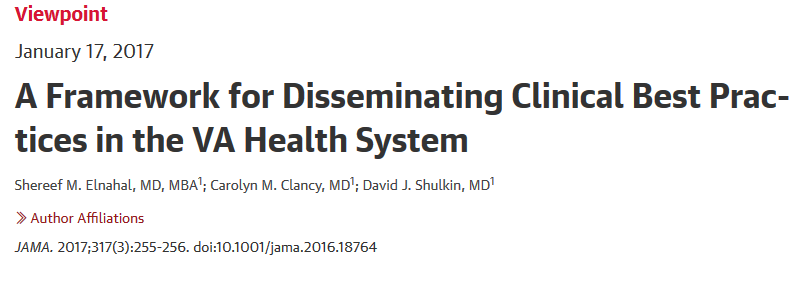
“Widespread adoption of clinical best practices has been challenging for health systems domestically and abroad. In 2001, an Institute of Medicine report noted that new, evidence-based clinical practices (such as computed tomography screening for lung cancer) can take an average of 17 years to reach patients consistently throughout the health system. Recent reports indicate no improvement in this time lag after 2010. As health systems evolve, rapid change remains a challenge. The ‘learning health system’ is a proposed framework to achieve this goal; however, attempts to put this framework into practice have fallen short. The Department of Veterans Affairs Diffusion of Excellence (VADOE) is a learning health system approach that aligns best practices with system assets (eg, governance structures and common communications platforms) to achieve rapid dissemination of these improvement projects and draws from thoughtful guidelines for dissemination and improvement in health care.” ()
The foregoing abstract of the January 17, 2017, edition of the Journal of the American Medical Association (JAMA) Viewpoint article by Shereef Elnahal, MD, et al entitled “A Framework for Disseminating Clinical Best Practices in the VA Health System” describes the VADOE three-phase methodology for developing and promulgating clinical best practices in a large healthcare provider organization. However, as with other methodologies based on Lean/Six-Sigma process improvement tools and methods, VADOE achieves evidence-based analysis and documentation of improved processes (“Phase I: Identifying Promising Practices”) and creates a fertile and well-controlled environment for process promulgation (“Phase II: Recruit Champions”) but of stops short in its final phase (“Phase III: Replication”) of employing a uniform and reliable means for process replication, which is required to realize the optimal and potentially life-saving case outcomes that are the purpose of clinical standards of care evolving to best practices.